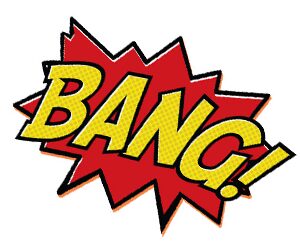Whether your name is Auric Goldfinger or Joe Schmoe, safety in the workplace should always be top priority. Even a Bond Villain must make certain that the guy running his laser is safe and keeps all his fingers in order to operate the machine and obtain the desired results. We only hope that you will not be using your laser to dispose of your nemesis. It is important that precautions are taken to ensure that no one injures themselves or damages the equipment. Always use your Personal Protective Equipment such as laser safety glasses, in particular, ANSI approved safety glasses, that you can get from AP Lazer at any time.
The operator should also be familiar with the built-in safety features; for example, there are safety switches on each of the main doors which will not allow you to run a laser job while the doors are open. The Water Flow Safety switch detects coolant flow and works to prevent the laser from firing if the coolant is too low. These safety features were installed in accordance with federal and international regulations and should never be altered or bypassed. When the AP Lazer is in use and utilizing the patented open architecture design, at no time should anyone enter the workspace with any parts of their body.
While an AP Lazer does allow you many more engraving options than many other lasers could ever hope to match, there are certain materials that should NEVER go under a laser. Kevlar, PVC, and materials containing chlorine are never safe to use in laser systems. One popular misnomer states that all you need is sufficient ventilation; while ventilation is important, this is simply inaccurate. All of the above materials release gases that will cause permanent damage to the metals on the laser. More importantly, they can cause serious illness to you and can even prove to be fatal.
While James Bond thoroughly enjoys a good explosion, at AP Lazer we stay away from them. So although you can – and definitely should – engrave those acrylics, papers, and woods, never leave them unattended. As a “better safe than sorry” rule, always keep a fire extinguisher on hand.
Handling heavier items – such as granite monuments – requires extra safety measures. First of all, steel-toed boots should be used in the event a piece is dropped. For leveling, we recommend the exclusive EZ Leveling system on the AP Lazer machines.
Finally, proper ventilation is important when working with materials that smoke or fume. Acrylics and woods are only two examples of materials that can release noxious fumes and smoke, or carbon monoxide. If the fumes and smoke are not properly vented, the collection of gases and fumes can cause serious illness and even prove fatal. Which is, as far as laser operating goes, an incredibly mundane way to go.
If you have any questions about laser operation safety that are not covered here, please feel free to contact us via live chat, by phone at 800-858-8617, or aplazer@aplazer.com
0 Comments
Great tips for staying safe around engraving machines. It’s important to remember that safety comes first so thanks for sharing.
I like that you said that we don’t want to have explosions while laser cutting. If I was going to laser cut something I would want to do it safely. You might want to contact a professional to help you with the cutting.
Thank you for the tips about being safe around laser cutting machines. My husband was to have engraved plaques for some of his employees. I am sure that he will just outsource the job, but this is still a really helpful article for safety in general!
I never knew that there were certain materials that you wouldn’t want to place in an engraver under a laser. I remember when I was in high school, we had a laser cutter that we made things in during my engineering class. I would never have thought then that there was a material that could become dangerous if you placed it under a laser.
Comments are closed.